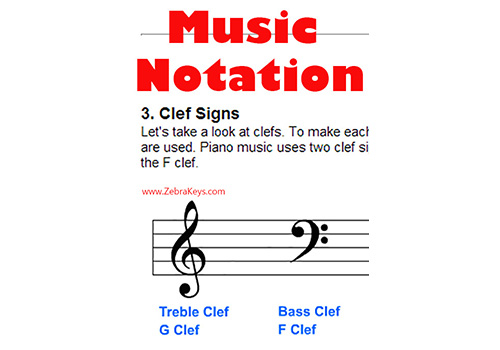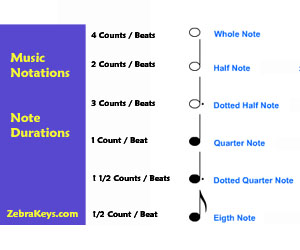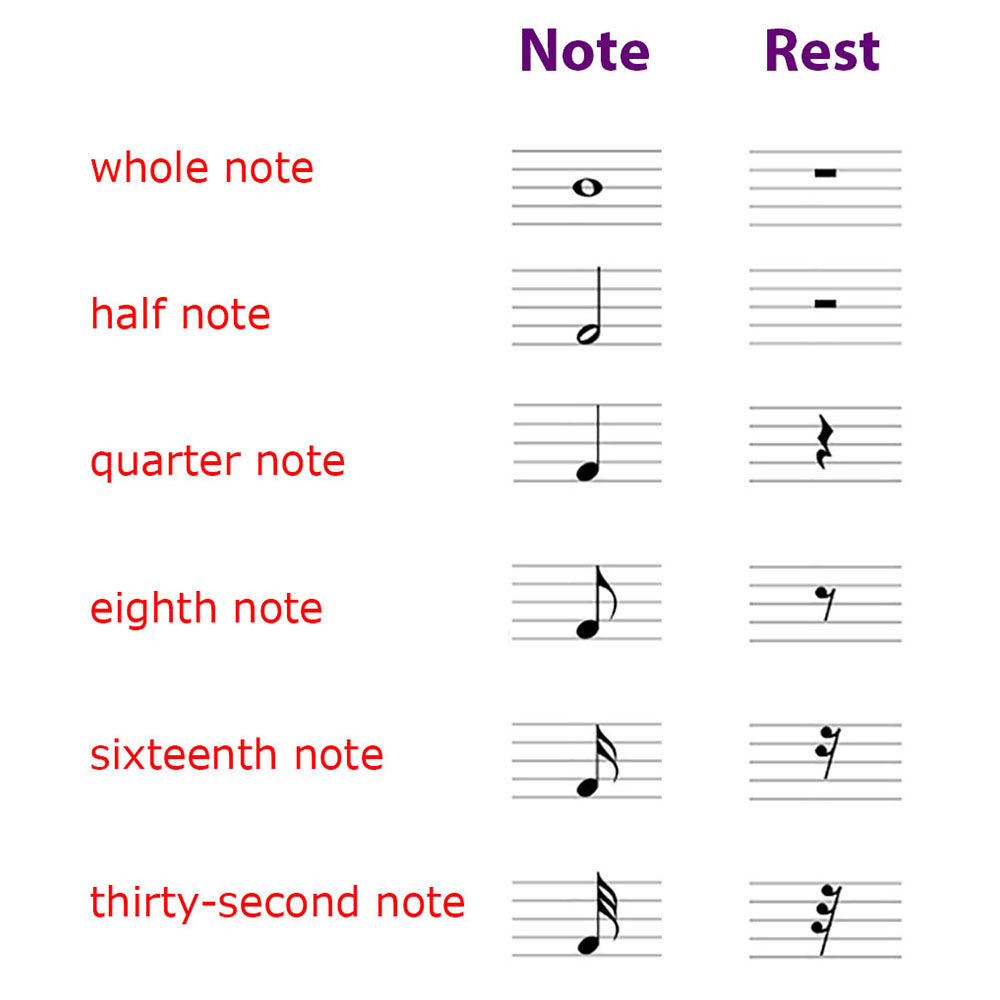Recommended
Categories
Basic Music Notation
Lesson 5 - Note Durations |
|---|
I. Index1. Introduction II. Content1. IntroductionIn this lesson, you are going to learn about how rhythm is represented in music notation.2. Keeping Time in MusicWhen playing music, you have to know how to keep time. Music is divided into separate chunks of time called "measures". Measures are separated from each other by a vertical line called a "bar line".3. Time SignaturesA time signature tells you how a particular piece of music is played. A time measure consists of two numbers written as a fraction (i.e. 4/4). The top number tells you how many counts (beats) are in each measure, and the bottom number tells you what kind of a note (e.g. a whole note, a half note, etc.) receives one count. For example, when the time signature is 4/4, the "4" on the top tells you that there are four beats in each measure, and the "4" on the bottom tells you that a "quarter note" receives one count (or beat). When a "time signature" shows "3/4", the "3" on the top tells you that there are three beats in each measure, and the "4" on the bottom tells you that a "quarter note" receives one count. Our lessons will be using the time signatures of "4/4, 3/4, and 2/4".4. Four Counts per MeasureMusic written with a time signature of 4/4 has four counts per measure. Let's go ahead and count one through four in each measure. Notice that there is a plus sign between the numbers. You can substitute the plus sign (+) with "and". By doing this, you can count "one and two and three and four and". This will make it easier for you to count an "eighth note" further in this lesson and lessons to come.5. Three Counts per MeasureSometimes, music is written with three counts per measure instead of four. Music written with a time signature of 3/4 is called 3/4 time and receives three counts per measure. Let's go ahead and count "one and two and three and" in each measure.6. Two Counts per MeasureAt other times, there are two counts per measure instead of four. Music written with a time signature of 2/4 is called 2/4 time and receives two counts per measure. Let's go ahead and count "one and two and" in each measure.7. Note DurationsHow a note looks tells us how many counts or beats it receives. As we have learned how to count within a measure, let us now take a few moments to study different notes in the chart below:8. Counting With Whole NotesIn 4/4 time, a "whole note" receives 4 counts (beats). In the example below, there is only 1 whole note in each measure. Play and hold each note for four counts (i.e. "one and two and three and four and"). Let's now listen to the animation below and count along. Count "one and two and three and four and / one and two and three and four and".9. Counting With Half NotesIn 4/4 time, a "half note" receives 2 counts (beats). In the example below, there are 2 half notes in each measure. Play and hold each note for two counts (i.e. "one and, two and"). Let's now listen to the animation below and count along. Count "one and two and three and four and / one and two and three and four and".10. Counting With Quarter NotesIn 4/4 time, a "quarter note" receives 1 count (beat). In the example below, there are 4 quarter notes in each measure. Play and hold each note for one count (i.e. "one and"). Let's now listen to the animation below and count along. Count "one and two and three and four and / one and two and three and four and".11. Counting With Dotted Half NotesIn 4/4 time, a "dotted half note" receives 3 counts (beats). In the example below, there is 1 dotted half note and one quarter note in each measure. Play and hold each dotted half note for three counts (i.e. "one and two and three and") and each quarter note for one count (i.e. "one and"). Let's now listen to the animation below and count along. Count "one and two and three and four and / one and two and three and four and".12. Counting With Eighth NotesIn 4/4 time, an "eighth note" receives 1/2 of a count (beat). In the example below, there are 8 eighth notes in each measure. Play and hold each note for one-half of a count (i.e. "one"). Let's now listen to the animation below and count along. Count "one and two and three and four and / one and two and three and four and".13. ConclusionCongratulations! You have just learned how to keep time in music by counting.Now try out what you have just learned on our virtual piano keyboard below... 
Custom Search
|
Recommended Stuff
|
Flash Plugin is no longer available. Learn How to Read Music - Watch Basic Music Notation Lessons from the videos below: |
|
Lesson 4 Grand Staff  |
Lesson 5 Note Durations  |
Lesson 4 - Music Notation: Grand Staff







